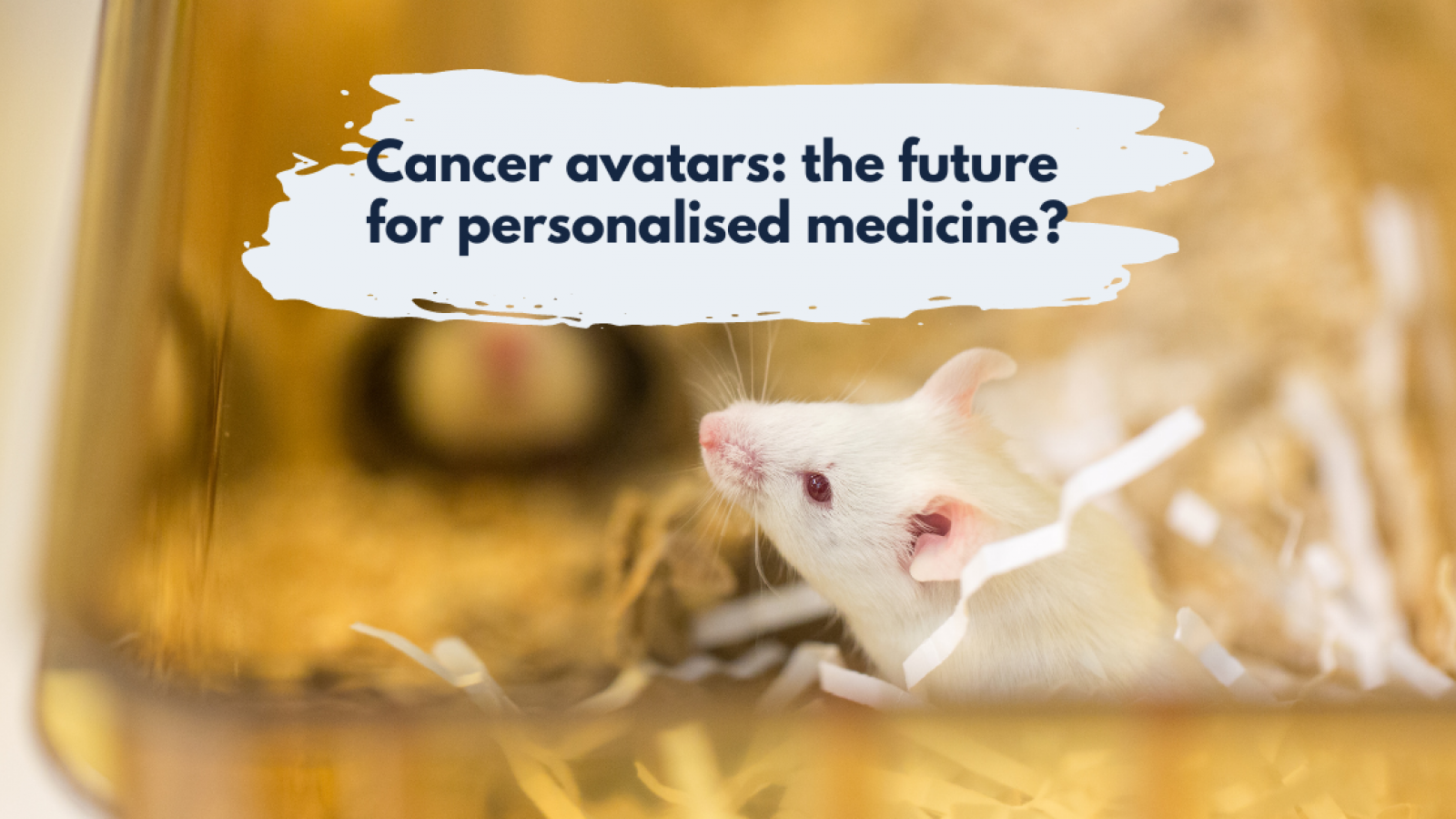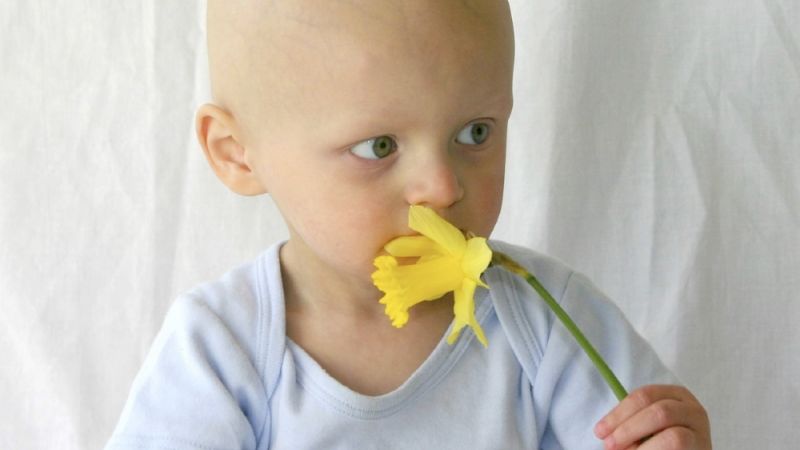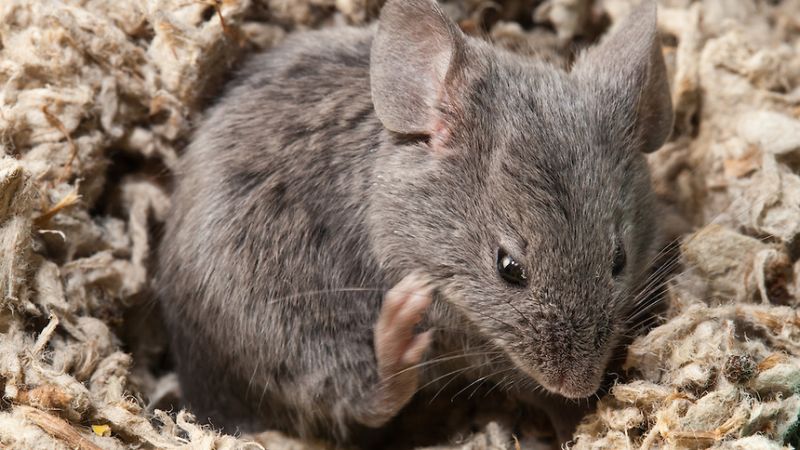Cancer avatars: the future for personalised medicine?
There are almost as many cancers as there are patients. Not only can different organs be affected (brain, breast, pancreas, colon etc.) but each type of cancer can express different sets of mutations. This makes them not only difficult to treat, but even more difficult to understand.
Individual tumours can respond differently to certain treatments. This means drugs for one group of patients won’t necessarily work for another. The difficulty is knowing which treatment will be the best fit to treat a specific tumour.
Without accurate ways to tell who should get which treatment, patients potentially suffer from repeated rounds of ineffective and toxic chemotherapy. This trial-and-error approach causes side-effects and anxiety, which are potentially unnecessary, and wastes precious time and money.
Researchers have found one way around this problem by creating ‘cancer avatars’ - animals that are given cancer cells taken from the patient. By transplanting tumour samples taken from patients during surgery directly into animal avatars, the researchers hope to recreate the complexity of the patient’s cancer. They hope it will help them to identify effective drug treatments, specific to each patient.
While patient tumour cells can be grown in cell cultures in petri dishes, and into 3D organoids, they don’t allow researchers to grasp the full picture of treatment response. According to Dr Anguraj Sadanandam from The Institute of Cancer Research, London, the way tumours interact with their particular ‘microenvironment’, the cells, blood vessels and immune system of a specific patient, often proves crucial in tumour management. Cells, selected and treated so they can grow in a laboratory setting, often react quite differently than in their original context as part of a cancer tumour.
“As such, cells grown in the lab are not as predictive of patient response”, explains Dr Rita Fior from the Champalimaud Centre for the Unknown in Lisbon, Portugal. In avatars, tumour cells go directly into the animal, without first being cultivated in a dish, which can change their nature. This allows clinicians to study how the entire body responds to the tumour, which is difficult to achieve in cell cultures alone.
“One of the main drawbacks in cancer research has been the lack of laboratory tools that represent the true complex nature of tumours in patients,” Dr Alejandra Bruna, from The Institute of Cancer Research, London says. “This has impacted our understanding of cancer biology and drug development, and our findings in the lab aren’t always reproduced in the clinic.” Animal avatars are an attempt to develop more representative techniques.
Dr Bruna and her team work on developing mouse avatars. They have notably shown that when you put a tumour into an avatar mouse, the tumour retains all the molecular features that it has in the human. Mice are the most used model in cancer avatar research. But one of the downsides is that these mice have to be specially bred to lack a normal immune response in order to make the tumour develop, and that has a significant impact on how cancers progress and respond to treatment.
“The literature is full of papers showing that immuno-deficient mice are very good at reflecting original tumour reactions. But these models can take months to make and patients often don’t have that time to wait,” adds Dr Fior, who decided to devote her work to developing zebrafish avatar models.
Preliminary data already confirm that zebrafish are a really good avatar model for cancer. Not only do they mimic well what goes on in patients, but they do so rapidly and naturally. The patient cells are transplanted when the fish are still at a larval developmental stage when the immune system is not yet fully developed. This means the human cells are not rejected. The zebrafish T and B immune cells haven’t matured and so there is no need to use modified strains with deficient immune systems.
In a matter of days, the researchers can have operational avatars, far cheaper and on a larger scale than is possible in mice. Many hospitals are already equipped with zebrafish facilities or collaborate with institutes that have them.
Fruit flies have also been considered as possible avatar models. Researchers can genetically engineer flies to develop cancers with the same genetic mutations as the patient’s. Robotic equipment can then be used to screen hundreds of drug combinations on the flies. Professor Ross Cagan from the Icahn School of Medicine at Mount Sinai in New York and his team were able to screen 121 existing drugs in various combinations until they found the ideal approach for their patient.
Fruit flies are small and breed very fast meaning researchers can generate large numbers of them in the lab. They are particularly amenable to robotic screening methods, and by replacing species such as mice are a step forward in animal welfare, although the relative simplicity of their immune system can be a limit on their effectiveness.
All these different models have their pros and cons, says Dr Fior. But they do have one thing in common: they are expensive and need lots of infrastructure and expertise. Although clinical testing is underway, some doubt that these models will find a place in day-to-day clinical practice and treatment. But that doesn't mean that avatar models don't have their place in a lab, on the contrary. Researchers are using avatar models in fundamental and clinical research to identify viable therapies.
"It is another type of personalised or precision medicine," explains Dr Sadanandam. "We use the avatar models to develop biomarkers to screen patients to see who responds to different therapies. We screen the mouse models, similarly to patients, to find out who would respond to a particular therapy. It has a much broader application.”
Before using animals, researchers often use AI approaches combined with organoid and cell cultures to identify the most potent drugs. Only if successful, do they test the therapies in the animal avatars. This reduces the use of animals in the studies, while maximising the chances of the findings going to the clinic.
There is still a lot more to do before the possibilities represented by animal avatars are exhausted. First and foremost, a clinical trial needs to show that information from avatars reliably benefit patients. More data is also needed on which patients' avatars are most likely to help, possibly focusing on a subset of patients with fewer treatment options. In the meantime, using avatars may help individual patients to receive the most targeted treatments.
“Our goal is to predict in advance what’s the best treatment and get the right drug the first time,” says Dr Fior. “Then we can stop experimenting on patients.”
Last edited: 3 March 2022 11:13



